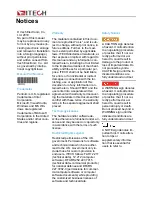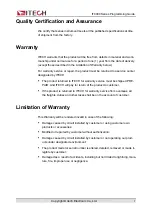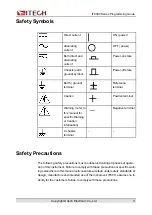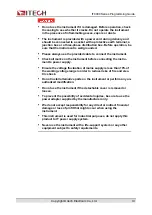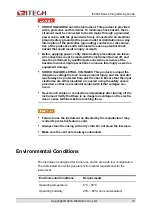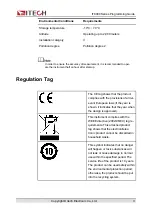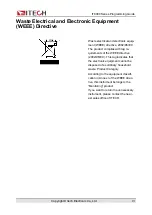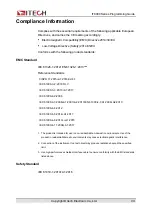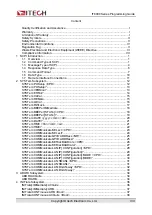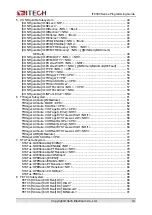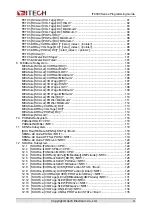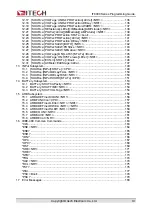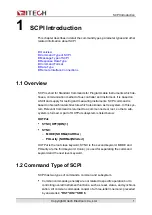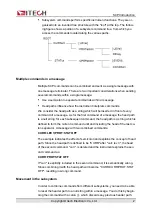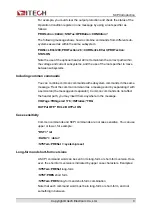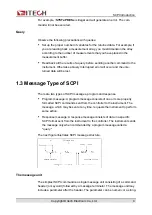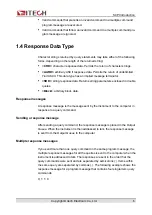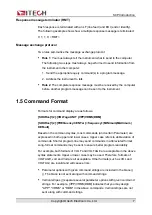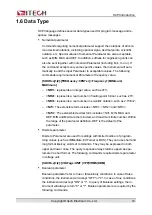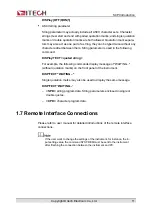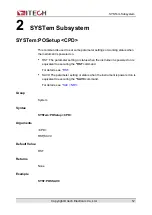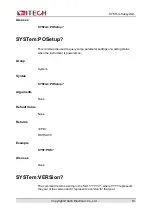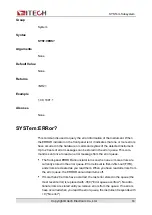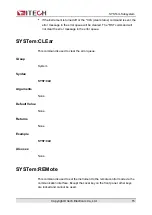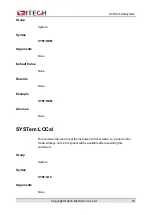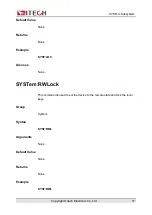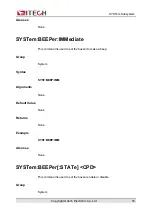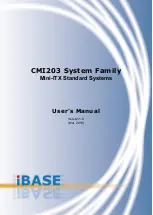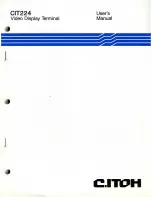
For example, you could clear the output protection and check the status of the
Operation Condition register in one message by using a root specifier as
follows:
PROTection:CLEAr;:STATus:OPERation:CONDition?
The following message shows how to combine commands from different sub-
systems as well as within the same subsystem:
POWer:LEVel 200;PROTection 28; :CURRent:LEVel 3;PROTection:
STATeON
Note the use of the optional header LEVel to maintain the correct path within
the voltage and current subsystems, and the use of the root specifier to move
between subsystems.
Including common commands
You can combine common commands with subsystem commands in the same
message. Treat the common command as a message unit by separating it with
a semicolon (the message unit separator). Common commands do not affect
the header path; you may insert them anywhere in the message.
VOLTage:TRIGgered 17.5;:INITialize;*TRG
OUTPut OFF;*RCL 2;OUTPut ON
Case sensitivity
Common commands and SCPI commands are not case sensitive. You can use
upper or lower, for example:
*RST = *rst
:DATA? = :data?
:SYSTem:PRESet = :system:preset
Long-form and short-form versions
A SCPI command word can be sent in its long-form or short-form version. How-
ever, the short-form version is indicated by upper case characters. Examples:
:SYSTem:PRESet
long-form
:SYST:PRES
short form
:SYSTem:PRES
long-form and short-form combination
Note that each command word must be in long-form or short-form, and not
something in between.
Copyright © Itech Electronic Co., Ltd.
3
Содержание IT8000 Series
Страница 73: ...CONFigurable Subsystem Example IO INP LEV 1 Also see None Copyright Itech Electronic Co Ltd 60...
Страница 100: ...STATus Subsystem Also see None Copyright Itech Electronic Co Ltd 87...
Страница 161: ...SOURce Subsystem Query Syntax None Returns None Copyright Itech Electronic Co Ltd 148...

